Inbox and Environment News - Issue 182
September 28 - October 4, 2014: Issue 182
BUILDING TRUST IS KEY TO MINING'S 'SOCIAL LICENCE'
23 SEPTEMBER 2014 - Australians have endorsed the important role mining plays in the prosperity of the nation but there is still much to be done to bolster the industry's acceptance, trust and support, according to a CSIRO report released today.
Released at the International Mining and Resources Conference in Melbourne, the Australian attitudes toward mining report is based on a survey of more than 5000 people Australia-wide.
According to lead researcher, Dr Kieren Moffat, the survey provides insights and data on community attitudes and possible ways for the sector to build its future opportunities and 'social licence to operate'.
"A key finding is that, Australians consider that mining is a worthwhile pursuit when you weigh up all the associated benefits and costs," Dr Moffat said.
"The survey shows Australians broadly accept mining and that acceptance underpins the social licence to operate, but it shows that support is fragile and subject to things like perceptions of mining impacts, governance and the sharing of benefits."
The survey in 2013/14 covered 1283 people living in or near mining operations in 11 identified regions as well as 1562 people living in non-mining regions and 2276 people in metropolitan areas across the country.
The survey forms part of a larger CSIRO program of work examining the relationship between mining and society at different scales in Australia and internationally - with a similar report just released for Chile.
"Australians across mining, non-mining and metropolitan regions strongly agreed that mining contributes significantly to the economy, to the standard of living, to our way of life and our future prosperity. Those surveyed in each group also generally agreed that mining creates jobs, opportunities and infrastructure in regions," Dr Moffat said.
"There are however relatively strong community perceptions that mining impacts negatively on the environment, water quality, agriculture, climate change and the health of local communities."
Those surveyed expressed mid-range levels of trust in state and federal governments, the industry and non-government organisations and a below mid-range rating of the capacity of governments or legislation to keep the industry accountable.
"The work indicates that Australians trust and accept the industry more when the industry hears and is responsive to their concerns, when benefits from mining are shared equitably, and when the legislative and regulatory frameworks we have in place provide confidence that industry will do the right thing," Dr Moffat said.
The data is available through a CSIRO portal to allow anyone interested access to explore from their own perspective.
"The work shows that building trust and acceptance and the 'social licence' of the mining industry will require industry, governments and other stakeholders to work together with the wider community," Dr Moffat said.
Global emissions of carbon dioxide from the combustion of fossil fuels reached a new record of 36 billion tonnes last year.
22 September 2014
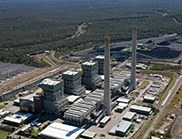 At the same time, the pace of emissions from burning fossil fuels continues to grow at a high rate.
At the same time, the pace of emissions from burning fossil fuels continues to grow at a high rate.
Executive-Director of the Global Carbon Project (GCP) and co-author of the 2014 report CSIRO's Dr Pep Canadell said the carbon dioxide level was "unprecedented in human history".
Dr Canadell said fossil fuel carbon dioxide emissions are projected to increase 2.5 per cent this year, bringing the total carbon dioxide emissions from all sources above 40 billion tonnes.
"Fossil fuel emissions in the past 10 years on average grew at 2.5 per cent per year, lower than the growth rate in the 2000s (which was 3.3 per cent per year) but higher than the growth rate in the 1990s (1 per cent)," Dr Canadell said.
"The declining growth rate in recent years is associated with lower GDP growth compared to the 2000s, particularly in China."
Fossil fuel emissions in the past 10 years on average grew at 2.5 per cent per year, lower than the growth rate in the 2000s, but higher than the growth rate in the 1990s."
DR PEP CANADELL
The report shows that Australian emissions continued to decline in 2013, adding to a downward trend that began in 2009, largely due to the decline in electricity generation from coal power plants.
The largest emitters in 2013 were China, USA, the European Union, and India, together accounting for 58 per cent of global emissions.
Fossil fuel emissions are tracking the high end of emissions scenarios used by climate scientists to project climate change using global circulation models.
The GCP provides an annual report of carbon dioxide emissions, land and ocean sinks and accumulation in the atmosphere, incorporating data from multiple research institutes from around the world.
The full data and methods are published today in the journal Earth System Science Data Discussions, with associated papers in the journals Nature Geoscience and Nature Climate Change.
Data and other graphic materials can be found at Global Carbon Budget [external link]: www.globalcarbonproject.org/carbonbudget/
Eraring coal-fired power station in Newcastle. Credit: Nick Pitsas

Aussie Backyard Bird count - Coming Soon to your Backyard
WELCOME HOME
After spending the summer breeding and feeding in the Arctic, the shorebirds are now making their long, arduous journey back to Australian shores just in time for spring. The coming months are the perfect time to head outside and welcome them back.
AUSSIE BACKYARD BIRD COUNT
We’ve got just the thing to get you into the great outdoors and make their home coming count. From 20-26 October 2014, during National Bird Week, BirdLife Australia is encouraging every Australian to head out into their ‘backyard’, no matter what shape or size, and take part in the very first Aussie Backyard Bird Count.
THERE'S AN APP FOR THAT
We have specially designed an Aussie Bird Count app, featuring a Field Guide with almost 400 Australian birds to help you identify what you are seeing, do your 20-minute count on the spot in your favourite patch, and submit your checklist immediately. The app is a freely available in app stores.
COUNT YOURSELF IN FOR OUR CHALLENGE
We are setting a national community challenge for Australian’s to spot a total of 100,000 birds and we would like to count you in. Not only will you get to know your feathered friends, but you’ll be contributing to a vital pool of information from across the country that will help us see how Australian birds are faring. Birds are unique indicators of environmental health. If they are doing well, then so are we.So get your friends and family together, head out into nature and start counting! Check out www.aussiebirdcount.org.au for loads more information and FAQs
How to make stronger, 'greener' cement: New formula could cut greenhouse-gas emissions
September 25, 2014 - Concrete is the world's most-used construction material, and a leading contributor to global warming, producing as much as one-tenth of industry-generated greenhouse-gas emissions. Now a new study suggests a way in which those emissions could be reduced by more than half - and the result would be a stronger, more durable material. The findings come from the most detailed molecular analysis yet of the complex structure of concrete, which is a mixture of sand, gravel, water, and cement. Cement is made by cooking calcium-rich material, usually limestone, with silica-rich material - typically clay - at temperatures of 1,500 degrees Celsius, yielding a hard mass called "clinker." This is then ground up into a powder. The decarbonation of limestone, and the heating of cement, are responsible for most of the material's greenhouse-gas output.
The new analysis suggests that reducing the ratio of calcium to silicate would not only cut those emissions, but would actually produce better, stronger concrete. These findings are described in the journal Nature Communications by MIT senior research scientist Roland Pellenq; professors Krystyn Van Vliet, Franz-Josef Ulm, Sidney Yip, and Markus Buehler; and eight co-authors at MIT and at CNRS in Marseille, France.
"Cement is the most-used material on the planet," Pellenq says, noting that its present usage is estimated to be three times that of steel. "There's no other solution to sheltering mankind in a durable way - turning liquid into stone in 10 hours, easily, at room temperature. That's the magic of cement."
In conventional cements, Pellenq explains, the calcium-to-silica ratio ranges anywhere from about 1.2 to 2.2, with 1.7 accepted as the standard. But the resulting molecular structures have never been compared in detail. Pellenq and his colleagues built a database of all these chemical formulations, finding that the optimum mixture was not the one typically used today, but rather a ratio of about 1.5.
As the ratio varies, he says, the molecular structure of the hardened material progresses from a tightly ordered crystalline structure to a disordered glassy structure. They found the ratio of 1.5 parts calcium for every one part silica to be "a magical ratio," Pellenq says, because at that point the material can achieve "two times the resistance of normal cement, in mechanical resistance to fracture, with some molecular-scale design."
The findings, Pellenq adds, were "validated against a large body of experimental data." Since emissions related to concrete production are estimated to represent 5 to 10 percent of industrial greenhouse-gas emissions, he says, "any reduction in calcium content in the cement mix will have an impact on the CO2." In fact, he says, the reduction in carbon emissions could be as much as 60 percent.
In addition to the overall improvement in mechanical strength, Pellenq says, because the material would be more glassy and less crystalline, there would be "no residual stresses in the material, so it would be more fracture-resistant."
The work is the culmination of five years of research by a collaborative team from MIT and CNRS, where Pellenq is research director. The two institutions have a joint laboratory at MIT called the Multi-Scale Materials Science for Energy and Environment, run by Pellenq and Ulm, who is director of MIT's Concrete Sustainability Hub, and hosted by the MIT Energy Initiative.
Because of its improved resistance to mechanical stress, Pellenq says the revised formulation could be of particular interest to the oil and gas industries, where cement around well casings is crucial to preventing leakage and blowouts. "More resistant cement certainly is something they would consider," Pellenq says.
So far, the work has remained at the molecular level of analysis, he says. "Next, we have to make sure these nanoscale properties translate to the mesoscale" - that is, to the engineering scale of applications for infrastructure, housing, and other uses.
M.J. Abdolhosseini Qomi, K.J. Krakowiak, M. Bauchy, K.L. Stewart, R. Shahsavari, D. Jagannathan, D.B. Brommer, A. Baronnet, M.J. Buehler, S. Yip, F.-J Ulm, K.J. Van Vliet, R.J-.M. Pellenq.Combinatorial molecular optimization of cement hydrates.Nature Communications, 2014; 5: 4960 DOI:10.1038/ncomms5960
South Australia must stop dumping e-waste and destroying business
Media release: 22 September 2014 - Hon. Greg Hunt. Federal Minister for Environment
The Commonwealth Government has recently been made aware of difficulties faced by some e-waste recycling businesses including disability service providers in South Australia and New South Wales.
The scheme was designed by the previous federal Labor government, and states and territories. Having become aware of the issues facing these businesses, including Aspitech in South Australia, I recently ordered an inquiry into practices in the sector and the operation of the scheme.
We are shocked by what we have found. The scheme is fundamentally flawed. It relies on all States continuing to support recycling and disability groups. This is not happening. They have failed to deliver their end of the bargain.
South Australia is exploiting a scheme created by the former federal Labor government to dump e-waste and cause considerable damage to businesses that employ disabled workers. South Australia is clearly misusing the system. Dumping these huge costs onto disability services is one of the most irresponsible and immoral actions I've seen by a state government. And now they're trying to blame others.
The current federal government was not involved in developing this scheme but we are determined to fix it. We didn't create the problem but we are doing what we can to resolve the problems created by others.
This is a scandal. It is a gross breach of faith by the South Australian government. They are taking advantage of and hiding behind an industry scheme, while failing to pay for their share of the cost of recycling.
At the federal level, Labor and the Greens left us with a complex scheme which is hurting disability service providers and has no safeguards to ensure that states take responsibility for their share of e-waste recycling.
I will be seeking to meet with states and industry in the next fortnight to discuss the matter. South Australia must come to the table.
I am committed to getting agreement from state and territory environment ministers and other stakeholders to review the operation of the National Television and Computer Recycling Scheme and report by mid 2015.
My Department will issue a review paper in the coming weeks to seek input from industry, service providers and governments about operational aspects of the scheme.
These actions will ensure that all issues are identified and can be addressed including concerns by raised by social enterprises.
In South Australia, the Commonwealth Department of Social Services has been a long term supporter of Australian Disability Service Enterprise Aspitech and its parent company, providing ongoing funding for 75 employees and $380,000 to help strengthen the Aspitech e-waste recycling business.
The Commonwealth calls on all states and territories, in particular the South Australian Government, to do the right thing for the environment and provide the necessary funding to deal with e-waste - as is their responsibility under the constitution.
I will also consider future CRT waste export permit decisions taking into account any additional information Australian business is able to provide regarding their ability to refine CRT glass in partnership with other recyclers here in Australia.
I anticipate that by working with state, territory and local governments, industry and e-waste service providers to directly address their issues and concerns, we can increase e-waste recycling that not only provides the best environmental outcomes, but also ensures stability for e-waste service providers.
Background
States, territories and local governments are currently responsible for 65 per cent of the e-waste generated in Australia and retain constitutional responsibility for all waste management.
The remaining 35 per cent of e-waste is processed at the expense of industry under a product stewardship scheme. This percentage is increasing over time.
Disability service providers, along with other enterprises, are contracted by industry to recycle e-waste. These are contracts between industry and private enterprise which do not involve the Commonwealth.
Consumers are able to take e-waste to disposal sites run by these organisations around the country.
These sites are often receiving more than the 35 per cent share that industry is taking responsibility for. This results in disability and industry groups being burdened with e-waste that is the responsibility of the states and territories.
Australia to host Asia-Pacific Rainforest Summit in Sydney
Media release: 24 September 2014
The Australian Government is delivering on its election commitment to host the Asia-Pacific Rainforest Summit in Sydney on 12 November 2014.
Foreign Minister Julie Bishop made the announcement in New York overnight at the United Nations Secretary General's Climate Summit.
The Asia-Pacific Rainforest Summit will bring together ministers from countries across the region and leaders from business to find practical ways to reduce rainforest loss and restore rainforest landscapes.
Asia-Pacific rainforests support extraordinary biodiversity, provide economic opportunity and livelihoods to millions and store billions of tonnes of carbon.
Slowing and halting the loss of precious rainforests is critical to addressing the global challenge of climate change.
The Summit will be preceded by a Stakeholder Dialogue on 11 November 2014 for technical and policy experts from business, government and civil society to explore action to slow rainforest loss in the region.
The Rainforest Summit will bring a regional focus to some of the key positive elements of the United Nations Secretary-General's Climate Summit. It will have a focus on:
Better tools to monitor forests, including using satellite technology
Combating illegal logging in the region
Protecting the unique biodiversity of regional rainforests
Building on private sector commitments to reduce or eliminate deforestation from the supply chain
Including indigenous and community groups in decisions about forests.
The Rainforest Summit precedes the World Parks Congress to be held in Sydney from 12 to 19 November.
Further details are available fromwww.environment.gov.au/rainforestsummit
Follow the Summit on twitter @envirogov
Flying doctor bees to prevent cherry disease
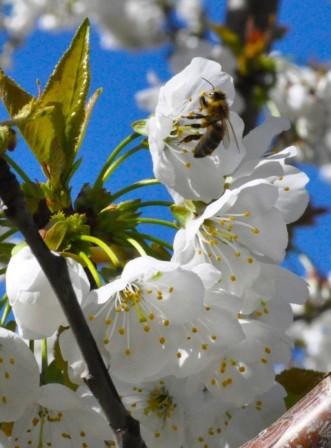 September 24, 2014 - University of Adelaide researchers are introducing a method to use bees to deliver disease control to cherry blossom, preventing brown rot in cherries. This is a new technique for Australia and a world first for cherry orchards with potential application in many horticultural industries. It will be demonstrated publicly for the first time at a field day today hosted by Cherry Growers of South Australia and the researchers at Lennane Orchards, Montacute.
September 24, 2014 - University of Adelaide researchers are introducing a method to use bees to deliver disease control to cherry blossom, preventing brown rot in cherries. This is a new technique for Australia and a world first for cherry orchards with potential application in many horticultural industries. It will be demonstrated publicly for the first time at a field day today hosted by Cherry Growers of South Australia and the researchers at Lennane Orchards, Montacute.
"Brown rot is caused by a fungus which significantly impacts the $150 million Australian cherry industry through costs of applying fungicide, yield loss and fruit spoilage," says project leader and bee researcher Dr Katja Hogendoorn, postdoctoral research associate with the University's School of Agriculture, Food and Wine.
"All commercial cherry growers spray during flowering to control the later development of cherry brown rot. Instead of spraying fungicide, we're using bees to deliver a biological control agent right to the flowers where it is needed. This uses an innovative delivery method called entomovectoring."
The biological control agent contains spores of a parasitic fungus that prevents another fungus that causes the brown rot from colonising the flower. Every morning, the cherry grower sprinkles the spores into a specially designed dispenser that has been fitted in front of the hive. The bees pick up the spores between their body hairs and bring them to the flowers.
"The 'flying doctors' technology is used successfully in Europe to control strawberry grey mould, but it's the first time for Australia and the first time in cherry orchards anywhere," Dr Hogendoorn says.
Dr Hogendoorn says the use of bees has many environmental and economic benefits compared to spraying fungicide.
"The bees deliver control on target, every day," she says. "There is no spray drift or run-off into the environment, less use of heavy equipment, water, labour and fuel."
Dr Hogendoorn says adoption of the technique will have the additional benefit of building up the honey bee industry and the number of managed hives. This will help prepare Australia for the expected incursion of the Varroa mite which is causing great damage and cost to bee and horticultural industries around the world.
With increasing availability of suitable biological control agents, future application of the 'flying doctors' technology is expected to become available for disease control in almonds, grapes, strawberry, raspberry, apple, pear and stone fruit.
The above story is based on materials provided by University of Adelaide. Bee on cherry blossom. Credit: Image courtesy of University of Adelaide
Green Army calling for first round of participants
Media release - 11 September 2014
The Government is putting out the call for the first round of recruits to join the Green Army.
We're looking for enthusiastic 17-24 year olds to join what will become the largest-ever team of young Australians supporting environmental action across the country.
Appointed Service Providers are now seeking expressions of interest from young people who want to gain valuable skills, training and experience in environmental and heritage conservation fields.
The Green Army will give participants the tools they need to help them enter the workforce, improve their career opportunities or further their education and training, while participating in projects that generate real and lasting benefits for the environment.
Last month, the first round of 196 Green Army projects to roll out across the country were announced. These projects are community-led and will support practical, grassroots environment and conservation activities.
Participants will have the opportunity to undertake accredited training such as work readiness, conservation and land management, heritage conservation, project and human resource management and heritage trade skills.
Green Army participants will also receive an allowance and be eligible to gain Certificate I or Certificate II qualifications in areas such as land management, park management, landscaping or horticulture or nationally endorsed skills set to support them in their future career prospects.
Participation is open to a diverse range of young people, including school leavers, gap year students, graduates and job seekers. Participants must be aged between 17 and 24 years and an Australian citizen or permanent resident.
Projects will be carried out across urban, regional and remote Australia with participants involved for up to 30 hours a week for a period of 20-26 weeks.
Project activities may include habitat restoration; protecting national heritage places; revegetating river catchments, coastal foreshores, rainforests and wetlands; constructing boardwalks; working closely with traditional owners and restoring culturally significant sites; pest animal management; upgrading walking tracks; and monitoring threatened species.
To register your interest contact a Service Provider operating in your state or territory. Details are available online atwww.environment.gov.au/green-army
Katandra Sanctuary Open
Katandra opens to the public every Sunday in July, August, September and October 10am - 4pm.
New Trustee appointments The Lands Department has appointed a new Trust for the next 5 years which includes three of the current trustees: Jenny Talbot, Lyn McDougall and David Seymour; and four new trustees: David James, Lachlan Laurie, Marita Macrae and Tim Thurston. Many thanks to the outgoing trustees, Margaret Seymour, John Gale, Ros Andrews and Garry Hewitt.

Walking off depression and beating stress outdoors? Nature group walks linked to improved mental health
September 23, 2014 - They are common suggestions to remedy stress: You just need a breath of fresh air. Walk it off. Get out and see people. Turns out all those things combined may in fact make you feel better - a lot better - a new large scale study suggests.
Group nature walks are linked with significantly lower depression, less perceived stress and enhanced mental health and well-being, according to the study conducted by the University of Michigan, with partners from De Montfort University, James Hutton Institute, and Edge Hill University in the United Kingdom. The findings appear in a special issue of Ecopsychology devoted to 'Ecopsychology and Public Health'.
People who had recently experienced stressful life events like a serious illness, death of a loved one, marital separation or unemployment especially seemed to see a mood boost after outdoor group walks.
"We hear people say they feel better after a walk or going outside but there haven't been many studies of this large size to support the conclusion that these behaviors actually improve your mental health and well-being," says senior author Sara Warber, M.D., associate professor of family medicine at the U-M Medical School and member of the Institute for Healthcare Policy and Innovation.
"Walking is an inexpensive, low risk and accessible form of exercise and it turns out that combined with nature and group settings, it may be a very powerful, under-utilized stress buster. Our findings suggest that something as simple as joining an outdoor walking group may not only improve someone's daily positive emotions but may also contribute a non-pharmacological approach to serious conditions like depression."
Researchers evaluated 1,991 participants from the Walking for Health program in England, which helps facilitate nearly 3,000 weekly walks and draws more than 70,000 regular walkers a year.
"Given the increase in mental ill health and physical inactivity in the developed world, we are constantly exploring new, accessible ways to help people improve their long term quality of life and well-being," Warber says.
"Group walks in local natural environments may make a potentially important contribution to public health and be beneficial in helping people cope with stress and experience improved emotions."
The lead author of the study was Melissa R. Marselle, Ph.D., M.Sc., of the Department of Psychology at Edge Hill University in Ormskirk, UK and the Institute of Energy and Sustainable Development at De Montfort University in Leicester, UK.
Marselle Melissa R., Irvine Katherine N., and Warber Sara L.Examining Group Walks in Nature and Multiple Aspects of Well-Being: A Large-Scale Study. Ecopsychology, September 2014 DOI: 10.1089/eco.2014.0027
35-year plan for a healthier and more resilient Great Barrier Reef released for Comment - Feedback
Joint media release - 15 September 2014
A new long-term sustainability plan to protect and manage the Great Barrier Reef for the next 35 years has been released for comment by the Australian and Queensland governments.
Queensland Minister for Environment and Heritage Protection Andrew Powell said the Reef 2050 Long-Term Sustainability Plan satisfied a longstanding requirement by UNESCO.
"This has been a collaborative effort from key organisations, scientists and industry groups including Agforce, Australian Institute of Marine Science, Ports Australia, Queensland Conservation Council, Regional Natural Resource Management Groups and World Wildlife Fund," Mr Powell said.
"As we promised we have done more than any other government to ensure the Great Barrier Reef remains an iconic World Heritage site now and into the future.
"Its release is another illustration of meeting UNESCO's requirements and continuing the great work we have been doing in ensuring the Great Barrier Reef remains an iconic world heritage site."
Mr Powell said the plan brought together a range of existing initiatives under the one umbrella to ensure greater efficiency and effectiveness.
"While the management of the Great Barrier Reef is a collective responsibility, and a matter of global interest, the fact remains this icon is a part of Queensland and it is vital that it is protected and managed now and into the future," Mr Powell said.
Federal Environment Minister Greg Hunt said the Reef 2050 Long-Term Sustainability Plan was an overarching framework for managing the Reef from 2015 to 2050.
"This Reef Plan is the Queensland and Australian Governments' commitment to working with industry and the community to improve the health and resilience of the Great Barrier Reef for future generations," Mr Hunt said.
"The plan sets out targets and actions to help safeguard the Reef against threats such as poor water quality and crown-of-thorns starfish; improve its resilience to challenges like storms and cyclones; and conserve species such as turtles and dugongs while supporting existing sustainable activities including tourism, agriculture, shipping, fishing and more.
"Maintaining and protecting this iconic World Heritage Area, while considering the needs for long-term sustainable development, is a critical priority.
"I now encourage people to read the plan and take this opportunity to help shape the long term future of the Reef."
Visit www.environment.gov.au/marine/gbr/reef2050 to download the Reef 2050 Long-Term Sustainability Plan, and make a submission online, by email or post. Supporting information to assist people to make a submission will also be available on the website.
The Australian and Queensland government has released the Reef 2050 Long-Term Sustainability Plan for public comment for a six week period until 27 October 2014
BOOST FOR NATURAL RESOURCE MANAGEMENT
Katrina Hodgkinson MP, Minister for Primary Industries and Rob Stokes MP, Minister for the Environment, Minister for Heritage
MEDIA RELEASE: Thursday 25 September 2014
Minister for Primary Industries, Katrina Hodgkinson, and Minister for the Environment, Rob Stokes, today announced a boost for natural resource management with $79.5 million committed over the next three years.
Ms Hodgkinson said the partnership, between the Office of Environment and Heritage (OEH) and Local Land Services, reinforces the NSW Government’s support for natural resource management.
“Local Land Services is a new way of thinking about regional service delivery, and today’s announcement ensures that an important funding pillar of the organisation is locked in for the next three years,” Ms Hodgkinson said.
“This crucial partnership agreement will see funds delivered through new regional service delivery organisation, Local Land Services.
“This funding will be allocated across the 11 Local Land Services regions and invested according to regional strategic plans to meet State-wide priorities.
“We know that healthy soil, vegetation, water and biodiversity underpin agricultural production and vibrant communities.”
Mr Stokes said the OEH funding from Waste and Environment Levy is provided to Local Land Services to deliver on-ground regionally-based natural resource management programs.
“Biodiversity conservation, threatened species management, Aboriginal cultural heritage protection and native vegetation management programs are all set to benefit from this funding,” Mr Stokes said.
“Consistent with Cabinet’s commitment this funding sees the waste levy dollars being returned to regional areas.
“This will also include pest and weed management programs that support state and regional scale investment priorities.
“The funding also recognises the value of protecting Aboriginal cultural heritage including significant sites and traditional knowledge through natural resource management projects.”
Local Land Services delivers biosecurity, agricultural and natural resource management services to landholders and rural and regional communities in NSW, following the consolidation of a number of separate organisations earlier this year.
Strong commitment to environmental science with funding for new research
Media release: 25 September 2014
The Australian Government has confirmed its long-term commitment to environment and climate research with funding of $102 million over four years for the National Environmental Science Programme.
The programme will assist decision-makers to understand, manage and conserve Australia's environment by funding world-class biodiversity and climate science.
The research will ensure decisions about managing Australia's biodiversity and environmental resources are made using the best available information.
The NESP is a competitive merits-based programme. Applications are now open for groups of research institutions to form research hubs to commence in January 2015.
A competitive process will select six research hubs, focussing on:
Threatened Species Recovery - supporting the management of threats and improving recovery of threatened species.
Tropical Water Quality - researching coastal water quality and coastal management focused on the Great Barrier Reef and other tropical waters.
Clean Air and Urban Landscapes - supporting environmental quality in urban areas.
Earth Systems - furthering our understanding of the drivers of Australia's climate, focusing on coastal systems and protections.
Marine Biodiversity - researching Australia's oceans and marine environments, including temperate coastal water quality and marine species.
Northern Australia Environmental Resources - supporting the sustainable development of our unique northern landscapes.
Interested organisations are welcome to submit applications for funding by 5 November 2014.
The National Environmental Science Programme brings together the National Environmental Research Programme and Australian Climate Change Science Programme.
Collaborative research funded under the National Environmental Science Programme will address priorities under the Government's Plan for a Cleaner Environment. The new programme will provide greater cohesion between environmental and climate science.
Research funded under the National Environmental Research Programme and the Australian Climate Change Science Programme will continue through to scheduled completion in June 2015 and June 2016 respectively.
The programme guidelines and information is available atwww.environment.gov.au/nesp
VALLEY OF ANCIENT PINE PLANTED TO SAVE AN ICONIC SPECIES
Rob Stokes MP, Minister for the Environment, Minister for Heritage, Minister for the Central Coast, Assistant Minister for Planning
MEDIA RELEASE: Sunday 21 September 2014
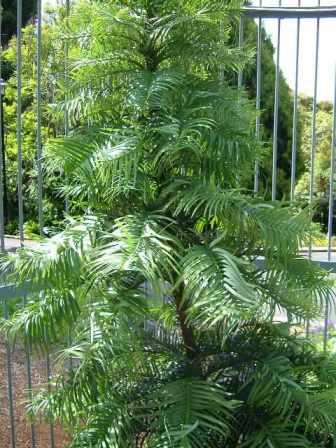 In a secret location in the Blue Mountains, a valley of young Wollemi Pines have been planted by scientists as an insurance policy for the ancient plant, discovered 20 years ago this month.
In a secret location in the Blue Mountains, a valley of young Wollemi Pines have been planted by scientists as an insurance policy for the ancient plant, discovered 20 years ago this month.
Environment Minister Rob Stokes and Blue Mountains MP Roza Sage marked the anniversary by declaring the Wollemi Pine as the state’s first “Iconic” plant species under the NSW Government’s Saving our Species Program, which aims to protect the our most vulnerable species from extinction.
“The Wollemi Pine captured the world’s attention when it was discovered because it had been presumed extinct for at least 60 million years,” Mr Stokes said.
“The Wollemi will join other Iconic species that are important socially, nvironmentally and economically, such as the Koala and Brush-Tail Rock-Wallaby.”
“The Wollemi Pine is listed as threatened in NSW because its survival in the wild remains tenuous.”
Mrs Sage said this new two hectare translocation colony in the Blue Mountains is a major step in securing its future, and so far the almost 100 plants are thriving.
“Access to the original site is closely monitored but has failed to protect it from the introduction of Phytophthora; a mould in soil that causes die back or root rot and was most likely walked in on the shoes of uninvited visitors,” Mrs Sage said.
“Some of the individual species are potentially hundreds or a thousand of years old.”
“The risk to the original colony has been closely managed and visits are made by a small team of National Park managers and scientists twice a year with protective strategies to eliminate the risk of further spreading the disease.”
Mr Stokes and Mrs Sage also announced a $25,000 injection of funds towards securing the plant’s survival in the wild which will be used to:
• Undertake disease control and testing non-injurious techniques to promote plant defence of trees affected by Phytophthora dieback• Monitor plant health in the wild population.
• Manage potential catchment impacts including fire, pest animals and weeds • Undertake surveillance in the wild to reduce impacts from unauthorised visitation
• Maintenance of ex situ collection as a back-up for wild population “It has been two decades since this plant was discovered and scientists are still unlocking its mysteries,” Mr Stokes said.
“The translocation site is being monitored of a number of scientific studies being conducted in conjunction with the University of Western Sydney and the University of Melbourne.
“Both studies are looking at ways to protect the original colony form the potentially devastating impacts of Phytophthora and better understand the conditions required to protect its survival in the wild.
In the wild, Wollemi Pines are a majestic conifer that grow up to 40 metres high, with a trunk diameter of over one metre and bark that is said to resemble bubbling chocolate.
“NSW is the custodian of a living fossil that provides a window to our past and we must take every action to protect its survival,” Mr Stokes said.
Key partners working to protect the Wollemi Pine include the NSW Office of Environment and Heritage (including National Parks and Wildlife Service), Royal Botanic Gardens and Domain, University of Melbourne, University of Western Sydney.
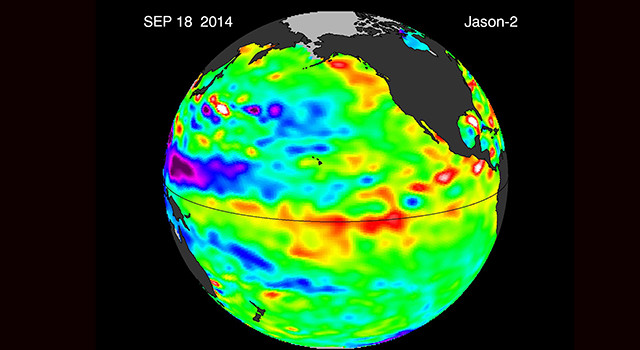
The fickle El Niño of 2014
September 23, 2014 - Prospects have been fading for an El Niño event in 2014, but now there's a glimmer of hope for a very modest comeback. Scientists warn that unless these developing weak-to-modest El Niño conditions strengthen, the drought-stricken American West shouldn't expect any relief.
The latest sea-level-height data from the NASA/European Ocean Surface Topography Mission (OSTM)/Jason-2 satellite mission show a pair of eastward-moving waves of higher sea level, known as Kelvin waves, in the Pacific Ocean - the third such pair of waves this year. Now crossing the central and eastern equatorial Pacific, these warm waves appear as the large area of higher-than-normal sea surface heights (warmer-than-normal ocean temperatures) hugging the equator between 120 degrees west and the International Dateline. The Kelvin waves are traveling eastward and should arrive off Ecuador in late September and early October.
A series of larger atmospheric "west wind bursts" from February through May 2014 triggered an earlier series of Kelvin waves that raised hopes of a significant El Niño event. Just as the warming of the eastern equatorial Pacific by these waves dissipated, damping expectations for an El Niño this year, these latest Kelvin waves have appeared, resuscitating hopes for a late arrival of the event.
The new image is online at:www.jpl.nasa.gov/images/earth/elnino/earth20140922-full.jpg
For an overview of 2014's El Niño prospects and Kelvin waves, please see: science.nasa.gov/science-news/science-at-nasa/2014/19may_elnino/
Climatologist Bill Patzert of NASA's Jet Propulsion Laboratory, Pasadena, California, says it's too early to know for sure, but he would not be surprised if the latest Kelvin waves are the "last hurrah" for this much-hoped-for El Niño. "Since February 2014, the prospect of an El Niño has waxed and waned. This late in the season, the best we can expect is a weak to moderate event. What comes next is not yet clear. But for the drought-plagued American West, the possibility of a badly needed drenching is fading," said Patzert.
NASA scientists will continue to monitor the Pacific to see what is in store next for the world's climate.
This image was created with data collected by the U.S./European OSTM/Jason-2 satellite during a 10-day period centered on Sept. 18, 2014. It shows a red and yellow area in the central and eastern equatorial Pacific, indicating that the ocean surface is about 4 to 6 inches (10 to 12 centimeters) above normal. Green indicates near-normal conditions. These regions contrast with the western equatorial Pacific, where sea levels (blue and purple areas) are 3 to 6 inches (8 to 15 centimeters) lower than normal.
The height of the ocean water relates, in part, to its temperature, and thus is an indicator of the amount of heat stored in the ocean below. As the ocean warms, the water expands and the sea level rises; as it cools, its level falls. Above-normal height variations along the equatorial Pacific indicate El Niño conditions, while below-normal height variations indicate La Niña conditions. The temperature of the upper ocean can have a significant influence on weather patterns and climate.
This latest image highlights the processes that occur on time scales of more than a year but usually less than 10 years, such as El Niño and La Niña. The image also highlights faster ocean processes such as Kelvin waves. As Patzert says, "Jason-2 is a fantastic Kelvin wave counter." These processes are known as the interannual ocean signal. To show that signal, scientists refined data for this image by removing trends over the past 21 years, seasonal variations and time-averaged signals of large-scale ocean circulation. For a more detailed explanation of what this type of image means, visit:http://sealevel.jpl.nasa.gov/science/elninopdo/latestdata/
The comings and goings of El Niño and La Niña are part of the long-term, evolving state of global climate, for which measurements of sea surface height are a key indicator. Jason-2 is a joint effort between NASA, the National Oceanic and Atmospheric Administration (NOAA), the French Space Agency Centre National d'Etudes Spatiales (CNES) and the European Organisation for the Exploitation of Meteorological Satellites (EUMETSAT). JPL manages the U.S. portion of Jason-2 for NASA's Science Mission Directorate, Washington, D.C. In early 2015, NASA and its international partners CNES, NOAA and EUMETSAT will launch Jason-3, which will extend the timeline of ocean surface topography measurements begun by the Topex/Poseidon and Jason 1 and 2 satellites. Jason-3 will make highly detailed measurements of sea level on Earth to gain insight into ocean circulation and climate change. JPL is a division of the California Institute of Technology.
For a time sequence of the evolution of the 2014 El Nino, visit:sealevel.jpl.nasa.gov/science/elninopdo/latestdata/archive/
To learn more on NASA's satellite altimetry programs, visit:http://sealevel.jpl.nasa.gov
The above story is based on materials provided by NASA/Jet Propulsion Laboratory. The image shows Kelvin waves of high sea level (red/yellow) crossing the Pacific Ocean at the equator. The waves can be related to El Niño events. Green indicates normal sea level, and blue/purple areas are lower than normal. Data are from the NASA/European Jason-2 satellite, collected Sept. 13-22, 2014. Credit: NASA/JPL-Caltech
IUCN World Parks Congress Sydney 2014
The IUCN World Parks Congress 2014 is a landmark global forum on parks and protected areas held once every 10 years. The Congress will be hosted in Sydney, Australia from 12 – 19 November 2014, on the theme Parks, Planet, People: inspiring solutions.
The Congress program consists of eight concurrent streams which are Reaching Conservation Goals, Responding to Climate Change, Improving Health and Well-being, Supporting Human Life, Reconciling Development Challenges, Enhancing Diversity & Quality of Governance, Respecting Indigenous & Traditional Knowledge and Culture and Inspiring a New Generation. One stream alone, the Improving Health and Wellbeing: Healthy Parks Healthy People will have over 150 speakers from around the world will contribute and between 3000 to 5000 delegates are expected to attend this very significant Congress. You will benefit from their expertise, practical lessons learnt and plans for positive change.
Attendees will range from world leaders in environment, health, tourism, education and urban planning fields and more, to young people with a passion and interest in creating a better future. As well as an incredibly informative week-long program there will be opportunities to network at social events, field trips around Sydney and Australia, and opportunities to be involved in groups taking specific action after the Congress to deliver on commitments for positive change.
For more information or to register go towww.worldparkscongress.org
Coastal Environment Centre
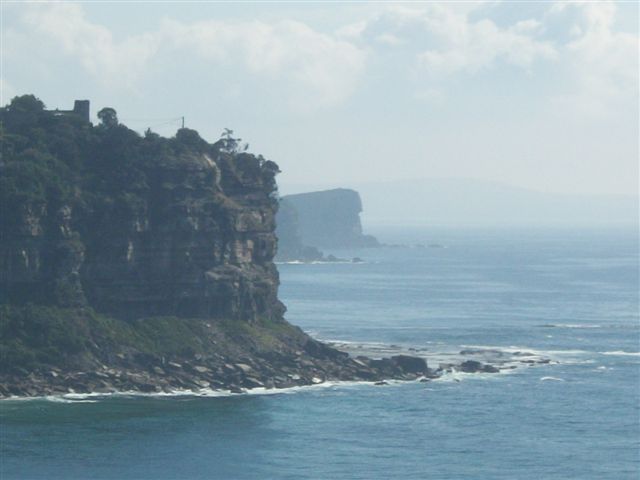
The Coastal Environment Centre (CEC) is a multi-award winning regional community environmental learning centre, and Pittwater Council's environmental flagship. CEC is celebrating its 20th year this December
More at: www.pittwater.nsw.gov.au/cec
Monthly Cooee Newsletter below. If you would like to receive Council's environmental newsletter via email, please contactjodi_harvey@pittwater.nsw.gov.au
September 2014 Cooee Newsletter includes information on: BushCare Planting Activities (volunteers needed), Workshops and Events, and great articles HERE
PARKS, PEOPLE, PLANET: AWE-INSPIRING PICTURES
Rob Stokes MP Minister for the Environment Minister for Heritage Minister for the Central Coast Assistant Minister for Planning
Nature lovers from across the world are invited to submit photos for a photography competition to showcase the beauty and importance of national parks.
Environment Minister Rob Stokes said the competition is a celebration of the crucial role national parks play in sustaining the health of our planet. The photos will be on exhibition during the IUCN World Parks Congress in Sydney during November.
"The Saved photography competition encourages professional and amateur photographers, as well as Instagram lovers, to get out and about in our national parks and start snapping,” Rob Stokes said.
“NSW has some of the most diverse and awe-inspiring landscapes in the world. We are surrounded by beaches, wilderness and world heritage areas.
"We want to see what places you love to visit and the parks, animals and people living or working in the places that inspire you.”
“National parks not only conserve many threatened species but contribute to global food and water supplies and provide clean air, medicine and jobs for millions of people around the world.”
The competition categories are:
• Parks: images and stories about national parks of the world;
• People: images and stories about the interaction between people and nature; and
• Planet: images and stories about the sustainable use of natural resources in protected areas including the conservation of habitats and species.
Entries are due by 30 September and the winning pictures will be on display at the IUCN World Parks Congress to be held from 12 - 19 November in Sydney.
Fondly referred to as "Nature's Olympics" the event will bring together 160 countries and global experts from organisations including UNESCO, the United Nations Environment Program and the Intergovernmental Panel on Climate Change.
You can submit photos via the competition websitewww.wpcsaved.com
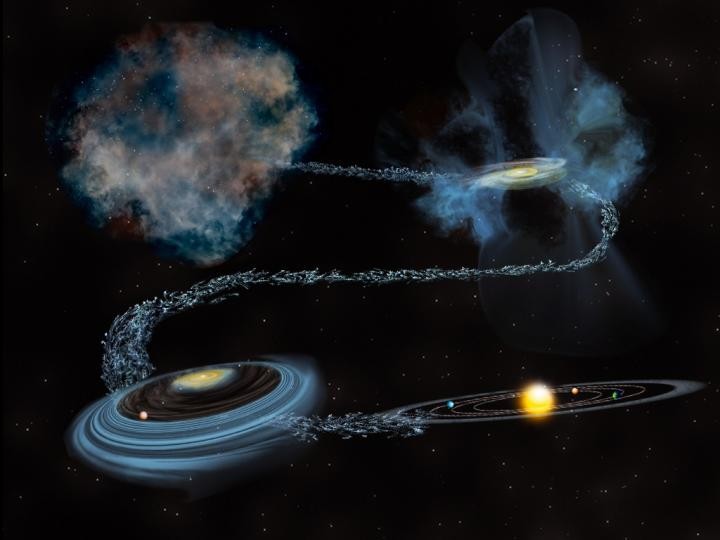
Earth's water is older than the sun: Likely originated as ices that formed in interstellar space
September 25, 2014 - Water was crucial to the rise of life on Earth and is also important to evaluating the possibility of life on other planets. Identifying the original source of Earth's water is key to understanding how life-fostering environments come into being and how likely they are to be found elsewhere. New work from a team including Carnegie's Conel Alexander found that much of our Solar System's water likely originated as ices that formed in interstellar space. Their work is published in Science.
Water is found throughout our Solar System. Not just on Earth, but on icy comets and moons, and in the shadowed basins of Mercury. Water has been found included in mineral samples from meteorites, the Moon, and Mars.
Comets and asteroids in particular, being primitive objects, provide a natural "time capsule" of the conditions during the early days of our Solar System. Their ices can tell scientists about the ice that encircled the Sun after its birth, the origin of which was an unanswered question until now.
In its youth, the Sun was surrounded by a protoplanetary disk, the so-called solar nebula, from which the planets were born. But it was unclear to researchers whether the ice in this disk originated from the Sun's own parental interstellar molecular cloud, from which it was created, or whether this interstellar water had been destroyed and was re-formed by the chemical reactions taking place in the solar nebula.
"Why this is important? If water in the early Solar System was primarily inherited as ice from interstellar space, then it is likely that similar ices, along with the prebiotic organic matter that they contain, are abundant in most or all protoplanetary disks around forming stars," Alexander explained. "But if the early Solar System's water was largely the result of local chemical processing during the Sun's birth, then it is possible that the abundance of water varies considerably in forming planetary systems, which would obviously have implications for the potential for the emergence of life elsewhere."
In studying the history of our Solar System's ices, the team - led by L. Ilsedore Cleeves from the University of Michigan - focused on hydrogen and its heavier isotope deuterium. Isotopes are atoms of the same element that have the same number of protons but a different number of neutrons. The difference in masses between isotopes results in subtle differences in their behavior during chemical reactions. As a result, the ratio of hydrogen to deuterium in water molecules can tell scientists about the conditions under which the molecules formed.
For example, interstellar water-ice has a high ratio of deuterium to hydrogen because of the very low temperatures at which it forms. Until now, it was unknown how much of this deuterium enrichment was removed by chemical processing during the Sun's birth, or how much deuterium-rich water-ice the newborn Solar System was capable of producing on its own.
So the team created models that simulated a protoplanetary disk in which all the deuterium from space ice has already been eliminated by chemical processing, and the system has to start over "from scratch" at producing ice with deuterium in it during a million-year period. They did this in order to see if the system can reach the ratios of deuterium to hydrogen that are found in meteorite samples, Earth's ocean water, and "time capsule" comets. They found that it could not do so, which told them that at least some of the water in our own Solar System has an origin in interstellar space and pre-dates the birth of the Sun.
"Our findings show that a significant fraction of our Solar System's water, the most-fundamental ingredient to fostering life, is older than the Sun, which indicates that abundant, organic-rich interstellar ices should probably be found in all young planetary systems," Alexander said.
L. Ilsedore Cleeves, Edwin A. Bergin, Conel M. O’D. Alexander, Fujun Du, Dawn Graninger, Karin I. Öberg, and Tim J. Harries. The ancient heritage of water ice in the solar system. Science, 26 September 2014: 1590-1593 DOI:10.1126/science.1258055
This is an illustration of water in our Solar System through time from before the Sun's birth through the creation of the planets. Credit: Bill Saxton, NSF/AUI/NRAO
In Germany we have these awesome town maps for the blind


Physicists teleport quantum state of photon to crystal over 25 kilometers
September 21, 2014 - Physicists at the University of Geneva (UNIGE) have succeeded in teleporting the quantum state of a photon to a crystal over 25 kilometres of optical fibre. The experiment, carried out in the laboratory of Professor Nicolas Gisin, constitutes a first, and simply pulverises the previous record of 6 kilometres achieved ten years ago by the same UNIGE team. Passing from light into matter, using teleportation of a photon to a crystal, shows that, in quantum physics, it is not the composition of a particle which is important, but rather its state, since this can exist and persist outside such extreme differences as those which distinguish light from matter.
The results obtained by Félix Bussières and his colleagues are reported in the latest edition of Nature Photonics.
The latest experiments have enabled verifying that the quantum state of a photon can be maintained whilst transporting it into a crystal without the two coming directly into contact. One needs to imagine the crystal as a memory bank for storing the photon's information; the latter is transferred over these distances using the teleportation effect.
Teleporting over 25 kilometres
The experiment not only represents a significant technological achievement but also a spectacular advance in the continually surprising possibilities afforded by the quantum dimension. By taking the distance to 25 kilometres of optical fibre, the UNIGE physicists have significantly surpassed their own record of 6 kilometres, the distance achieved during the first long-distance teleportation achieved by Professor Gisin and his team in 2003.
Memory after triangulation
So what exactly is this testing of quantum entaglement and its properties? One needs to imagine two entangled photons - in other words two photons inextricably linked at the most infinitesimal level by their joint states. One is propelled along an optical fibre (the 25 kilometres mentioned earlier), but not the other, which is sent to a crystal. It is a bit like a game of billiards, with a third photon hitting the first which obliterates both of them. Scientists measure this collision. But the information contained in the third photon is not destroyed - on the contrary it finds its way to the crystal which also contains the second entangled photon.
Thus, as Félix Bussières the lead author of this publication explains, one observes "that the quantum state of the two elements of light, these two entangled photons which are like two Siamese twins, is a channel that empowers the teleportation from light into matter." From there, it is a small step to conclude that, in quantum physics, the state takes precedence over the 'vehicle' - in other words an item's quantum properties transcend classical physical properties.
J. G. Bohnet, K. C. Cox, M. A. Norcia, J. M. Weiner, Z. Chen, J. K. Thompson.Reduced spin measurement back-action for a phase sensitivity ten times beyond the standard quantum limit. Nature Photonics, 2014; 8 (9): 731 DOI:10.1038/nphoton.2014.151 Crystals which contain photonic information after the teleportation. Credit: Copyright GAP, University of Geneva (UNIGE)
BP is "NOT" committed to the Gulf. Two lbs. of tar balls picked up today in one hour on Perdido Key, FL. - September 17th, 2014
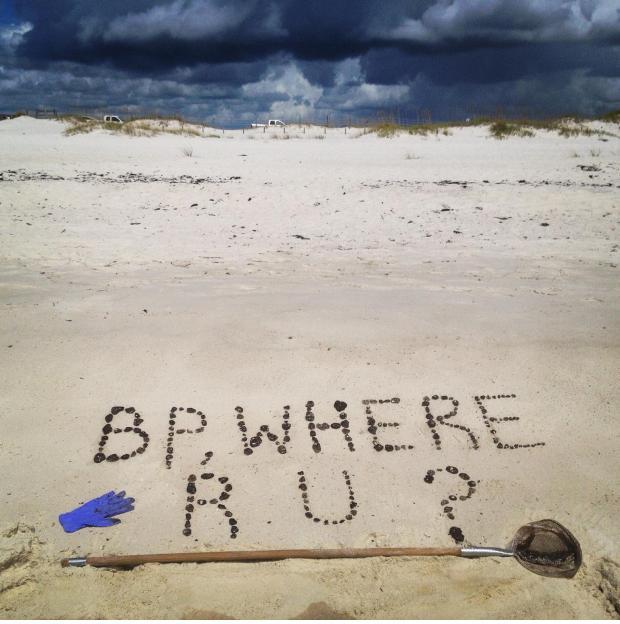
Classifying by computer (1966) by CSIRO
Published on 24 Sep 2014
In studying plants in their natural surroundings, botanists are usually confronted with a very complex set of environmental interactions. To divide their data into the most meaningful groups can mean many laborious hours, unless they use a computer.
This film shows something of the machinery of computer programming and classification. It points out how useful a computer can be in suggesting what groups, or boundaries between groups, might be worth further study.
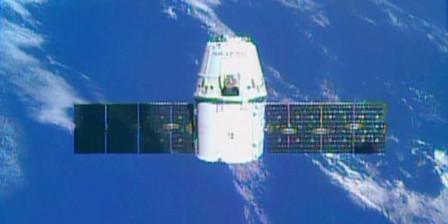
Fourth Dragon for commercial resupply services arrives at International Space Station
September 23, 2014 - The Dragon commercial cargo craft has completed a two day trip to the International Space Station after launching early Sunday morning. NASA astronaut Reid Wiseman and European Space Agency astronaut Alexander Gerst were at the controls of the robotics workstation in the Cupola when the Canadarm2 grappled Dragon at 6:52 a.m. EDT Tuesday. Later, the crew successfully opened the Dragon hatch and ingressed the vehicle. Hatch opening was scheduled for Wednesday but was performed Tuesday since the crew was running ahead of schedule. Wiseman and Gerst are slated to begin unpacking Dragon on Wednesday.
Dragon will spend the next four weeks attached to the Harmony node as the Expedition 41 trio unloads 4,885 pounds of (2,216 kg) crew supplies, hardware, experiments, computer gear and spacewalk equipment. This is the fourth SpaceX mission for NASA's Commercial Resupply Services contract, designated SpaceX CRS-4, with eight more missions slated to deliver a minimum of 20 metric tons to the station.
One of the new Earth science experiments Dragon has delivered is the ISS-Rapid Scatterometer to be installed outside the Columbus laboratory. The remote sensing instrument will use radar pulses to observe the speed and direction of winds over the ocean for the improvement of weather forecasting.
ISS-RapidScat replaces a similar device, QuickScat, which is an inoperable satellite orbiting Earth that performed the same functionality. The Jet Propulsion Laboratory partnered with the International Space Station Program Office to quickly deploy RapidScat which is actually a spare QuickScat device modified for operations on the space station.
Another experiment, one designed by students, will observe fruit flies as a research model for learning how diseases work at the cellular and molecular levels. Ames Research Center has partnered with NanoRacks, a private firm with research facilities on the station, and the Center for the Advancement of Science in Space (CASIS) to support the Ames Student Fruit-Fly Experiment (AFEX) on the orbital laboratory.
At the end of its stay Dragon will be filled with cargo to be returned to Earth where it will be retrieved in the Pacific Ocean off the coast of Baja California after splashdown. Nearly 3,300 pounds (1,486 kg) of cargo will be packed inside Dragon including research for analysis by scientists and computer parts and vehicle hardware to be checked out by engineers.
The next Commercial Resupply Services mission to the space station is Orbital-3 which is targeted to begin Oct. 14 when Orbital Sciences will launch its Cygnus spacecraft from Wallops Flight Facility in Virginia. SpaceX is scheduled to make another flight, SpaceX CRS-5, at the beginning of December for a one month stay, the final mission of the year to the station.
Three new Expedition 41 crew members will arrive at the station after they launch Thursday at 4:25 p.m. EDT. Soyuz Commander Alexander Samokutyaev and Flight Engineers Barry Wilmore and Elena Serova are at the Baikonur Cosmodrome in Kazakhstan making final preparations for their six-hour, four-orbit ride to the station's Poisk docking compartment inside the Soyuz TMA-14M spacecraft.
Right now the station is home to three space residents, Commander Max Suraev of Roscosmos, Flight Engineer Reid Wiseman of NASA and Flight Engineer Alexander Gerst of the European Space Agency. They are scheduled to return home Nov. 10 Kazakh time after a 5-1/2 month mission that began May 28.
The above story is based on materials provided by NASA. The SpaceX Dragon private space freighter approaches the International Space Station. Credit: NASA TV
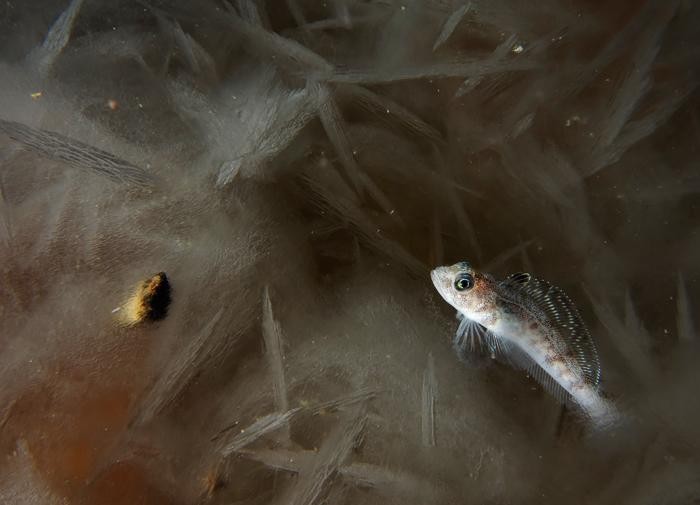
Antifreeze proteins in Antarctic fishes prevent freezing ... and melting
September 22, 2014 - Antarctic fishes that manufacture their own 'antifreeze' proteins to survive in the icy Southern Ocean also suffer an unfortunate side effect, researchers report: The protein-bound ice crystals that accumulate inside their bodies resist melting even when temperatures warm. The finding is reported in the Proceedings of the National Academy of Sciences.
"We discovered what appears to be an undesirable consequence of the evolution of antifreeze proteins in Antarctic notothenioid fishes," said University of Oregon doctoral student Paul Cziko, who led the research with University of Illinois animal biology professors Chi-Hing "Christina" Cheng and Arthur DeVries. "What we found is that the antifreeze proteins also stop internal ice crystals from melting. That is, they are anti-melt proteins as well."
Five families of notothenioid fishes inhabit the Southern Ocean, the frigid sea that encircles Antarctica. Their ability to live in the icy seawater is so extraordinary that they make up more than 90 percent of the fish biomass of the region.
DeVries discovered antifreeze proteins in Antarctic notothenioid fishes in the late 1960s, and was the first to describe how the proteins bind to ice crystals in the blood to prevent the fishes from freezing.
In the new study, the team investigated whether the antifreeze protein-bound ice crystals inside these fishes would melt as expected when temperatures warmed. When researchers warmed the fishes to temperatures above the expected melting point, some internal ice crystals failed to melt. Ice that doesn't melt at its normal melting point is referred to as "superheated."
The researchers also found ice crystals in wild notothenioid fishes swimming in relatively warmer Antarctic summer waters, at temperatures where they would be expected to be free of ice. By testing the antifreeze proteins in the lab, the team found that these proteins also were responsible for preventing the internal ice crystals from melting.
"Our discovery may be the first example of ice superheating in nature," Cheng said.
A diver himself, Cziko worked with other divers to place and maintain a temperature-logging device in McMurdo Sound, Antarctica, one of the coldest marine environments on the planet. The device recorded ocean temperatures there for 11 years, a substantial portion of notothenioids' lifespan. Not once in that time did temperatures increase enough to overcome the antifreeze proteins' anti-melting effect to completely rid the fishes of their internal ice, the researchers report.
The researchers suspect that the accumulation of ice inside the fishes could have adverse physiological consequences, but none have yet been discovered.
If the fishes are destined to carry ice crystals around all their lives, Cheng said, it is conceivable that ice particles could obstruct small capillaries or trigger undesired inflammatory responses. Cziko likens the potential threat to dangers posed by asbestos in the lungs or blood clots in the brain.
"Since much of the ice accumulates in the fishes' spleens, we think there may be a mechanism to clear the ice from the circulation," he said.
"This is just one more piece in the puzzle of how notothenioids came to dominate the ocean around Antarctica," he said. "It also tells us something about evolution. That is, adaptation is a story of trade-offs and compromise. Every good evolutionary innovation probably comes with some bad, unintended effects."
The long-term temperature record of McMurdo Sound produced in the study also "will prove to be of great importance and utility to the polar research community that is addressing organismal responses to climate change in this coldest of all marine environments," Cheng said.
Paul A. Cziko, Arthur L. DeVries, Clive W. Evans, and Chi-Hing Christina Cheng.Antifreeze protein-induced superheating of ice inside Antarctic notothenioid fishes inhibits melting during summer warming. PNAS, September 22, 2014 DOI:10.1073/pnas.1410256111
Special 'antifreeze' proteins in the blood of several Antarctic fish species bind to ice crystals and prevent the creatures from freezing. A new study finds that the proteins also allow the internal ice crystals to persist at temperatures that normally would melt them. Credit: Paul Cziko
Finally an answer to the age old question "Do raccoons on a beach in Panama City, FL like Fritos?"
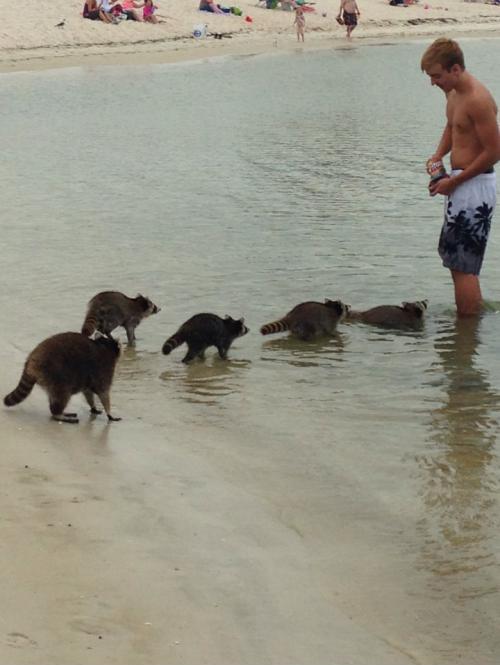

Enter The Nature Conservancy Australia Nature Writing Prize today!
Calling all nature writers. The Nature Conservancy Australia is delighted to open the third biennial Nature Writing Prize. The $5,000 award is for an essay between 3,000 and 5,000 words in the genre of ‘Writing of Place’ and the winning essay will be published in the Australian Book Review. The prize will go to an Australian writer whose entry is judged to be of the highest literary merit and which best explores his or her relationship and interaction with some aspect of the Australian landscape. The competition’s judges are Jesse Blackadder, award-winning author of Chasing the Light and Paruku The Desert Brumby, and Robert Gray, renowned poet, critic, and freelance writer.
The prize has been made possible thanks to a generous donation from The McLean Foundation, which is keen to promote and celebrate the literature of nature in Australia. The deadline for submissions is December 24, 2014, so get out your pens and start writing! Click here to learn more about the prize and review the terms and conditions for entering.
Health papers published this week:
Narrow focus on physical activity could be ruining kids' playtime
September 21, 2014 - While public health authorities focus on the physical activity benefits of active play, a new study from the University of Montreal reveals that for children, playing has no goal - it is an end in itself, an activity that is fun, done alone or with friends, and it represents "an opportunity to experience excitement or pleasure, but also to combat boredom, sadness, fear, or loneliness." "By focusing on the physical activity aspect of play, authorities put aside several aspects of play that are beneficial to young people's emotional and social health," explains Professor Katherine Frohlich of the university's Department of Social and Preventive Medicine, who supervised the study. "Play is a way to achieve various objectives, including the improvement of physical health and the development of cognitive and social aptitudes. Obviously, we must ensure children's development and combat obesity. But to get there, must we distort play?"
The study involved a photography and interview project with 25 Montreal area children, aged 7 to 11 years, as they photographed and talked about their favourite ways to play. One 10 year old girl loved climbing on a modern art sculpture near her home, for example. "Play is an activity that brings pleasure and is purposeless," explained the study's first author Dr. Stephanie Alexander, also of the university's Department of Social and Preventive Medicine. Children's photographs of their leisure activities show that sports are well represented - balls, bicycles, hockey, and baseball - but so are many sedentary activities, such as puzzles, knitting, reading, movies, and video games. Animals and pets were also photographed by many.
The semi-structured interviews allowed Alexander to better understand the meaning of play for the children. "Play reframed as a way for improving physical health removes the spontaneity, fun, and freedom in children's play, which is also important for their well-being," Alexander said. "Active play alone does not make up many children's preferences." It is also clear that risk-taking is an integral part of children's play preferences. "Allowing children to take acceptable risks while remaining vigilant is indeed beneficial to their development," Alexander added. "An overemphasis on safety may contribute to the emergence of a generation of young people that is less and less able to cope with the unpredictable."
In summary, the researchers identified four dimensions of play particularly important to children: play as an end in itself (children play for fun, not for exercise or for developing their mental and social skills); play isn't necessarily active (many children also enjoy more sedentary games); children feel ambiguous about scheduled play activities (children have little time for free play); and risk is considered a pleasurable component of their play. "Despite the abundance of messages targeting children and play and health, children's perspectives are rarely taken into account within public health, although they have social and scientific value," Frohlich said. "We hope that our findings will inform and improve the way authorities and indeed parents approach playtime."
S. A. Alexander, K. L. Frohlich, C. Fusco. Problematizing "Play-for-Health" Discourses Through Children's Photo-Elicited Narratives. Qualitative Health Research, 2014; 24 (10): 1329 DOI: 10.1177/1049732314546753
Sporting events should ditch nutritional supps, sports drinks sponsorship, experts urge
September 22, 2014 - Such sponsorship could mislead the public into thinking these products work well and/or are good for health - for which there is no strong scientific evidence - suggest Simon Outram and Bob Stewart of the Institute of Sport, Exercise, and Active Living, in Melbourne, Australia.
Two years ago, research published in BMJ Open reached similar conclusions.
Outram and Stewart accept that nutritional supplements and rehydration drinks don't compare with the unhealthiness of fast food, tobacco, or alcohol, all of which have been associated with major sporting events.
But the very fact that these products are marketed as beneficial or essential for sporting prowess and/or general health, when the evidence has so far failed to substantiate these claims or justify their cost, is likely to make it harder for the public to judge the value of these products objectively, they suggest.
"Successful sponsorship campaigns remove or minimise any scepticism about the product (a common reaction to advertising)," they write. "A form of seamless or hidden product association is created whereby such products come to be seen as integral to sport - the sports supplement or sports drink," they say, adding that celebrity endorsement helps to promote that idea.
"It is for good reason that nutritional supplement and sports drinks companies invest heavily in sports sponsorship," they write. "Such sponsorship - together with associated product endorsements and advertising - conveys the message that their products are integral to sporting engagement and achievement."
But they warn: "Sport may have found itself lending unwarranted credibility to products which would otherwise not necessarily be seen as beneficial for participation in sports and exercise or as inherently healthy products."
The issue has already prompted some degree of disquiet among sporting authorities about the perception that they might be seen to be endorsing nutritional supplements and sports drinks, suggest the authors.
The Australian Institute of Sports has voiced concerns about this, while the American Dietetic Association, Dieticians of Canada, and the American College of Sports Medicine have issued a joint statement, which among other things, questions the manufacturers' claims for the effectiveness of these products.
And the World Anti-Doping Agency has highlighted the potential inclusion of undeclared and banned substances in these products as a result of global differences in labelling and manufacture.
"If sport authorities, teams, and sports personalities distanced themselves from supplement and drinks company sponsorship, ways would have to be found to cover the financial gap created," admit the authors.
But they add: "Lessons can be learnt from the history of tobacco sponsorship and its gradual restriction, which did not lead to the wholesale collapse of sport."
S. M. Outram, B. Stewart. Should nutritional supplements and sports drinks companies sponsor sport? A short review of the ethical concerns. Journal of Medical Ethics, 2014; DOI: 10.1136/medethics-2014-102147
Artificial liver tested as potential therapy for patients with alcohol-related organ failure
September 22, 2014 - Cedars-Sinai physicians and scientists are testing a novel, human cell based, bioartificial liver support system for patients with acute liver failure, often a fatal diagnosis.
"The quest for a device that can fill in for the function of the liver, at least temporarily, has been underway for decades. A bioartificial liver, also known as a BAL, could potentially sustain patients with acute liver failure until their own livers self-repair," said Steven D. Colquhoun, MD, the surgical director of liver transplantation at Cedars-Sinai's Comprehensive Transplant Center.
Colquhoun is leading an investigation at Cedars-Sinai to assess the safety and effectiveness of the ELAD® bioartificial liver system, which is designed by Vital Therapies Inc., the sponsor of the clinical trials. The majority of the 49 sites currently involved in the investigation are in the United States, but studies are also underway in Europe and Australia. The research at Cedars-Sinai involves patients with liver disease caused by acute alcoholic hepatitis, a group with few therapeutic options.
In the bioartificial liver under investigation, blood is drawn from the patient via a central venous line, and then is filtered through a component system featuring four tubes, each about 1 foot long, which are embedded with liver cells. The external organ support system is designed to perform critical functions of a normal liver, including protein synthesis and the processing and cleaning of a patient's blood. The filtered and treated blood is then returned to the patient through the central line.
"If successful, a bioartificial liver could not only allow time for a patient's own damaged organ to regenerate, but also promote that regeneration. In the case of chronic liver failure, it also potentially could support some patients through the long wait for a liver transplant," said Colquhoun.
The functions of the liver are very complex. The 3-pound organ that sits to the right of the stomach performs many functions including detoxification, regulation of glucose levels and the making of vital proteins. Liver failure can be caused by trauma, such as an accident, by viral infections, overdosing on drugs - including some over-the-counter pain medications - and from alcohol abuse. Liver failure is often life-threatening in a matter of days.
Devices that do the work of human organs have been used successfully for years. Patients with kidney disease can use dialysis, and those with cardiac problems have ventricular assist devices or artificial hearts available to support or replace vital organ functions.
"Liver failure patients and their doctors have long been frustrated by the critical need to provide the kind of life-saving care kidney patients are afforded by dialysis. This important investigation we are undertaking at Cedars-Sinai is a critical step in addressing the medical emergency presented by liver failure," said Andrew S. Klein MD, MBA, director of the Comprehensive Transplant Center and the Esther and Mark Schulman Chair in Surgery and Transplantation Medicine.
The above story is based on materials provided by Cedars-Sinai Medical Center.
Working long hours linked to increased risk of type 2 diabetes in people doing low socioeconomic status jobs
September 24, 2014 - People working for more than 55 hours per week doing manual work or other low socioeconomic status jobs have a 30% greater risk of developing type 2 diabetes, according to the largest study in this field so far, published in The Lancet Diabetes & Endocrinology.
Mika Kivimäki, Professor of Epidemiology at University College London, UK, and colleagues conducted a systematic review and meta-analysis of published studies and unpublished individual-level data examining the effects of long working hours on type 2 diabetes up to 30 April 2014.
Analysis of data from 4 published studies and 19 studies with unpublished data involving 222 120 men and women from the USA, Europe, Japan, and Australia who were followed for an average of 7.6 years, found a similar risk of developing type 2 diabetes in people working more than 55 hours a week compared to those putting in a normal 35 to 40 hour week. However, the researchers noted significant differences when the results were looked at more closely.
Further analyses revealed that individuals doing low socioeconomic status jobs who worked 55 hours or more per week had a roughly 30% increased risk of developing diabetes compared to their counterparts who worked between 35 and 40 hours a week, even after taking into account health behaviours such as smoking and physical activity, and other risk factors including age, sex, and obesity. This association remained strong even after excluding shift work, which has been shown to increase the risk of obesity and developing type 2 diabetes.
The researchers say that further research is needed to identify the underlying mechanisms for the association between long working hours and diabetes in people doing low socioeconomic status jobs, but suggest a number of possible explanations, including working disruptive schedules that leave little time to take part in health restoring behaviours such as sleeping, unwinding, and exercise.
According to Professor Kivimäki, "The pooling of all available studies on this topic allowed us to investigate the association between working hours and diabetes risk with greater precision than has been previously possible. Although working long hours is unlikely to increase diabetes risk in everyone, health professionals should be aware that it is associated with a significantly increased risk in people doing low socioeconomic status jobs."
In a linked Comment, Dr Orfeu Buxton from Pennsylvania State University, PA, USA and Dr Cassandra Okechukwu from Harvard School of Public Health, MA, USA write that, "Kivimäki and colleagues' elegantly designed study provides a solid foundation for both epidemiological and intervention work on diabetes risks. The results remained robust even after controlling for obesity and physical activity, which are often the focus of diabetes risk prevention, suggesting that work factors affecting health behaviours and stress may need to be addressed as part of diabetes prevention."
Mika Kivimäki, Marianna Virtanen, Ichiro Kawachi, Solja T Nyberg, Lars Alfredsson, G David Batty, Jakob B Bjorner, Marianne Borritz, Eric J Brunner, Hermann Burr, Nico Dragano, Jane E Ferrie, Eleonor I Fransson, Mark Hamer, Katriina Heikkilä, Anders Knutsson, Markku Koskenvuo, Ida E H Madsen, Martin L Nielsen, Maria Nordin, Tuula Oksanen, Jan H Pejtersen, Jaana Pentti, Reiner Rugulies, Paula Salo, Johannes Siegrist, Andrew Steptoe, Sakari Suominen, Töres Theorell, Jussi Vahtera, Peter J M Westerholm, Hugo Westerlund, Archana Singh-Manoux, Markus Jokela. Long working hours, socioeconomic status, and the risk of incident type 2 diabetes: a meta-analysis of published and unpublished data from 222 120 individuals. The Lancet Diabetes & Endocrinology, 2014; DOI:10.1016/S2213-8587(14)70178-0
How physical exercise protects the brain from stress-induced depression
September 25, 2014 - Physical exercise has many beneficial effects on human health, including the protection from stress-induced depression. However, until now the mechanisms that mediate this protective effect have been unknown. In a new study in mice, researchers at Karolinska Institutet in Sweden show that exercise training induces changes in skeletal muscle that can purge the blood of a substance that accumulates during stress, and is harmful to the brain. The study is being published in the journal Cell.
"In neurobiological terms, we actually still don't know what depression is. Our study represents another piece in the puzzle, since we provide an explanation for the protective biochemical changes induced by physical exercise that prevent the brain from being damaged during stress," says Mia Lindskog, researcher at the Department of Neuroscience at Karolinska Institutet.
It was known that the protein PGC-1a1 (pronounced PGC-1alpha1) increases in skeletal muscle with exercise, and mediates the beneficial muscle conditioning in connection with physical activity. In this study researchers used a genetically modified mouse with high levels of PGC-1a1 in skeletal muscle that shows many characteristics of well-trained muscles (even without exercising).
These mice, and normal control mice, were exposed to a stressful environment, such as loud noises, flashing lights and reversed circadian rhythm at irregular intervals. After five weeks of mild stress, normal mice had developed depressive behaviour, whereas the genetically modified mice (with well-trained muscle characteristics) had no depressive symptoms.
"Our initial research hypothesis was that trained muscle would produce a substance with beneficial effects on the brain. We actually found the opposite: well-trained muscle produces an enzyme that purges the body of harmful substances. So in this context the muscle's function is reminiscent of that of the kidney or the liver," says Jorge Ruas, principal investigator at the Department of Physiology and Pharmacology, Karolinska Institutet.
The researchers discovered that mice with higher levels of PGC-1a1 in muscle also had higher levels of enzymes called KAT. KATs convert a substance formed during stress (kynurenine) into kynurenic acid, a substance that is not able to pass from the blood to the brain. The exact function of kynurenine is not known, but high levels of kynurenine can be measured in patients with mental illness. In this study, the researchers demonstrated that when normal mice were given kynurenine, they displayed depressive behaviour, while mice with increased levels of PGC-1a1 in muscle were not affected. In fact, these animals never show elevated kynurenine levels in their blood since the KAT enzymes in their well-trained muscles quickly convert it to kynurenic acid, resulting in a protective mechanism.
"It's possible that this work opens up a new pharmacological principle in the treatment of depression, where attempts could be made to influence skeletal muscle function instead of targeting the brain directly. Skeletal muscle appears to have a detoxification effect that, when activated, can protect the brain from insults and related mental illness," says Jorge Ruas.
Depression is a common psychiatric disorder worldwide. The World Health Organization (WHO) estimates that more than 350 million people are affected.
Leandro Z. Agudelo, Teresa Femenía, Funda Orhan, Margareta Porsmyr-Palmertz, Michel Goiny, Vicente Martinez-Redondo, Jorge C. Correia, Manizheh Izadi, Maria Bhat, Ina Schuppe-Koistinen, Amanda Pettersson, Duarte M. S. Ferreira, Anna Krook, Romain Barres, Juleen R. Zierath, Sophie Erhardt, Maria Lindskog, and Jorge L. Ruas. Skeletal Muscle PGC-1a1 Modulates Kynurenine Metabolism and Mediates Resilience to Stress-Induced Depression. Cell, September 2014